Frostpunk 2 takes us back into the icy wasteland of New London, thirty years after the events of the original game. The ever-present threat of extinction remains, but this time it’s not just the cold and hunger that haunt you—it’s the fragile web of societal dynamics that might spell your downfall. While its predecessor focused on small-scale survival, Frostpunk 2 magnifies both the city and its troubles, introducing new layers of complexity in its management systems and moral choices.
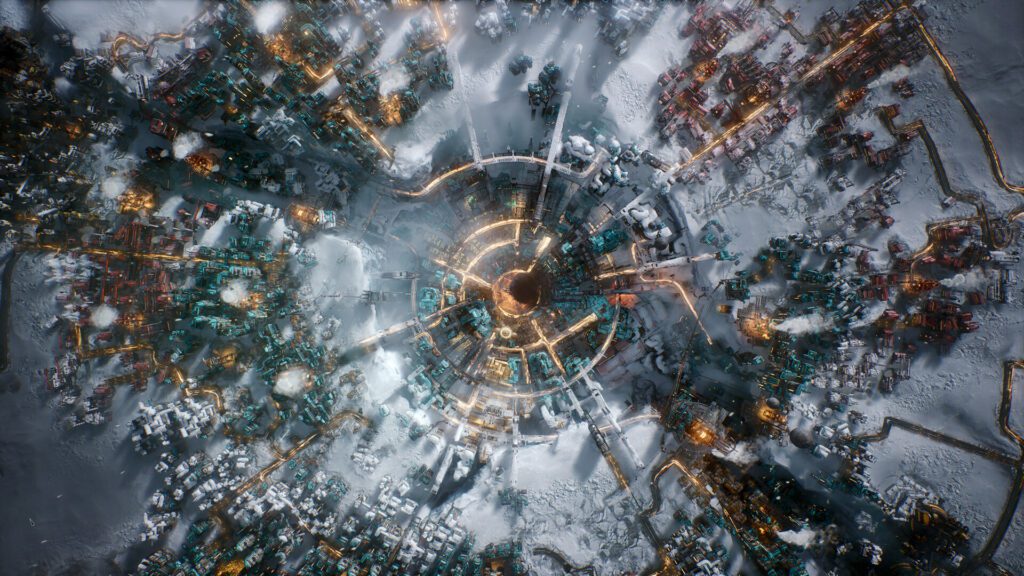
A Larger, Colder World
The most immediate difference between Frostpunk 2 and its predecessor is scale. Gone are the days of managing a handful of citizens struggling to huddle around a single generator. Now, you’re dealing with tens of thousands, managing entire districts rather than individual buildings. Instead of placing down homes or factories, you design massive industrial hubs, housing, and resource zones that reflect the city’s expanded vision.
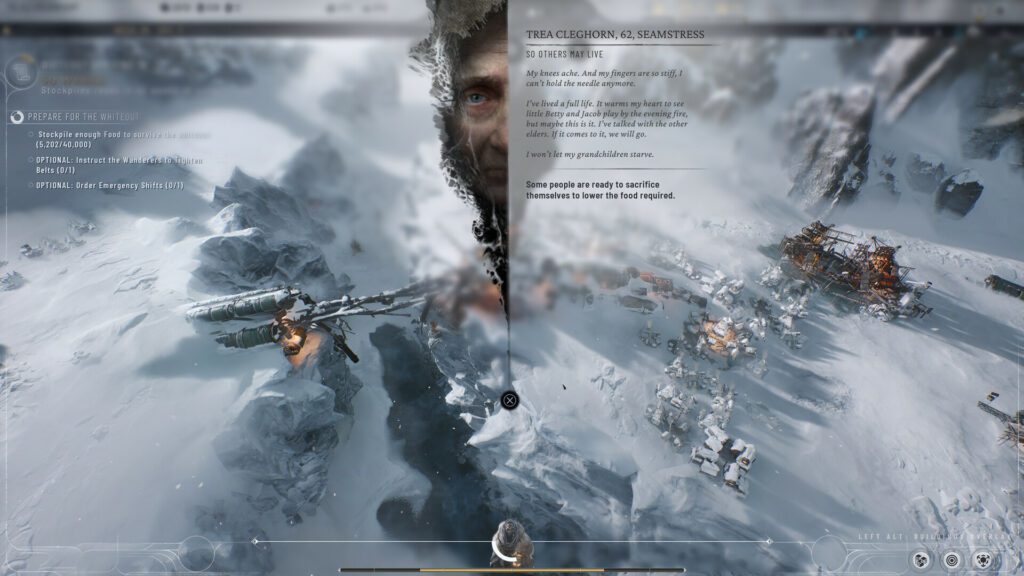
This increase in size is a mixed blessing. While the sprawling districts and industrial expanses of New London offer an impressive, grand spectacle, the more intimate connection to the city is diminished. In the original Frostpunk, the layout of your streets and the positioning of your heat generators felt personal, each decision imbued with weight. Here, the zoomed-out perspective can make your city feel less like a living organism and more like a clockwork mechanism, operating in the background as you tackle the larger concerns of society.
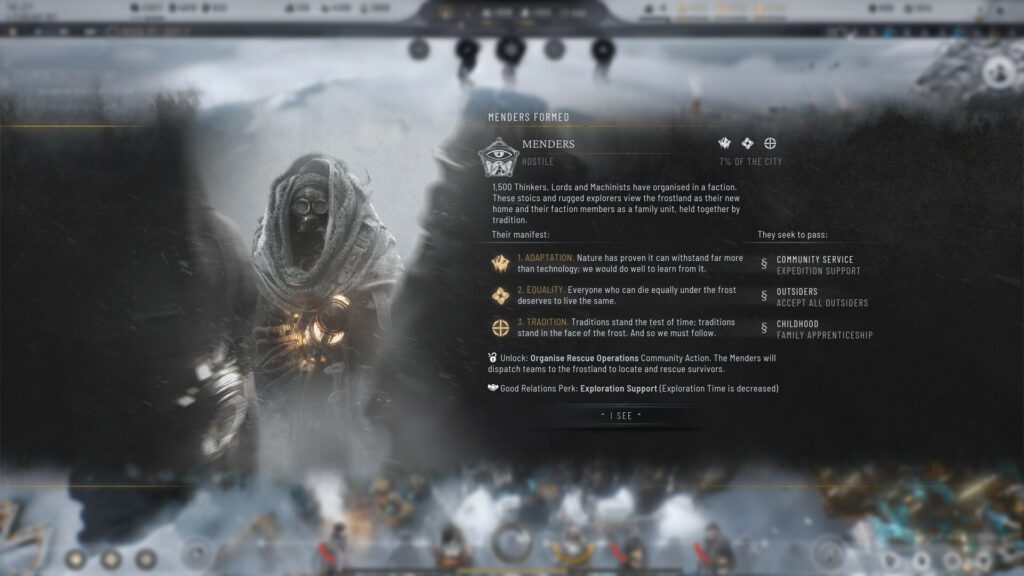
The Ice-Cold Politics of Power
But the true heart of Frostpunk 2 isn’t just the city—it’s the people. The factions that arise in New London as you lead the city to expansion are the game’s biggest new challenge. At first, you’ll only deal with a handful of factions, each with their own goals and moral codes. However, as the city grows and your decisions take root, smaller factions begin to emerge, each vying for power and pulling you in conflicting directions.
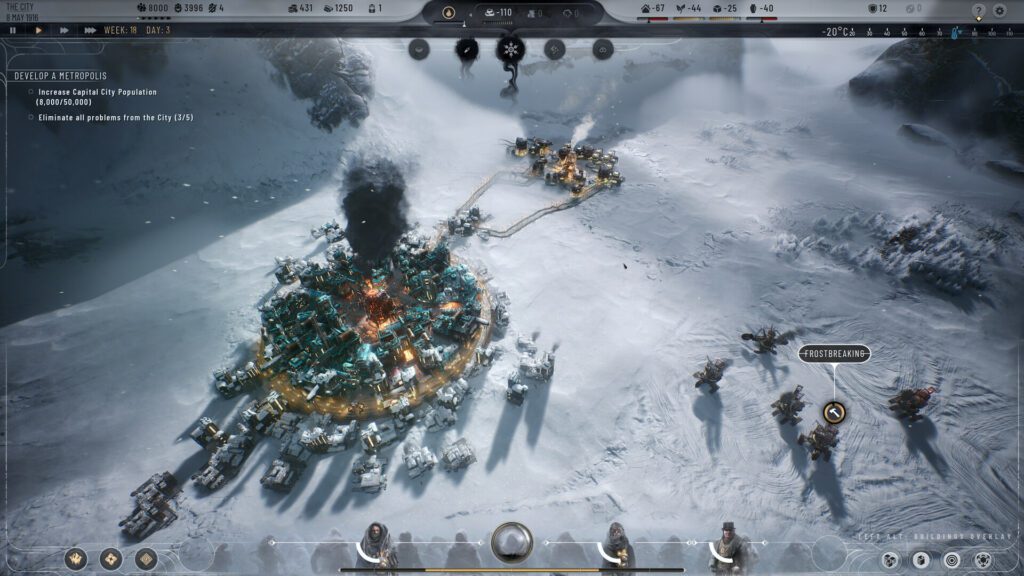
The game introduces a council system, where major laws and decisions must be passed with the support of factions. This political maneuvering is a brilliantly executed addition, forcing you to balance the demands of conflicting ideologies. Whether it’s the tech-hating Pilgrims demanding you shut off your city’s generator or the fascist-leaning Stalwarts pushing for thought control and human experimentation, the choices are never simple. The tension of navigating these ideological extremes feels like a natural evolution from the moral dilemmas of the first game, but here, it’s even more layered.
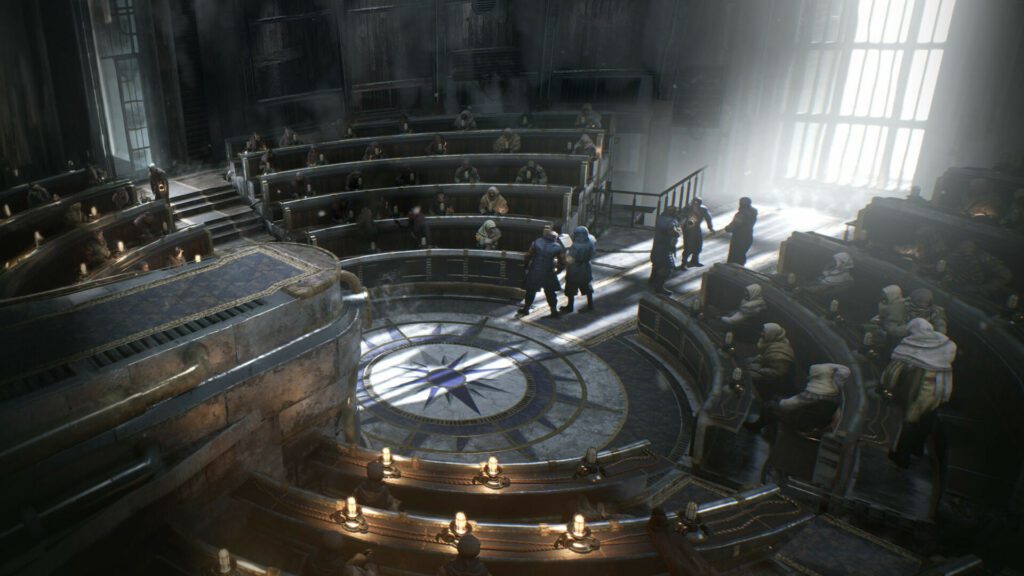
Your choices—whether noble or tyrannical—rarely go without consequence. Break a promise, and factions will turn hostile, potentially shutting down entire districts in protest. Keep one group happy, and you risk empowering them to a point where they might become a bigger threat than the cold itself. This constant tug-of-war between opposing philosophies injects a relentless intensity into decision-making.
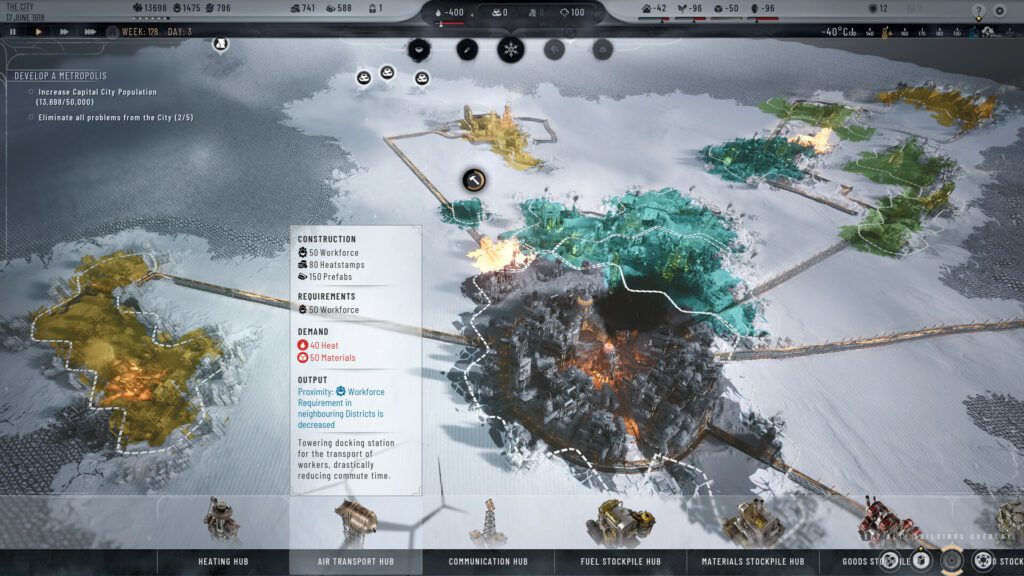
A Beautiful, Bleak Future
Visually, Frostpunk 2 is a spectacle. The dieselpunk aesthetic, with its churning factories and labyrinthine pipelines, is more impressive than ever. The desolation of the frozen wasteland is striking, especially when contrasted with the activity within your city’s districts. However, the fast pace at which weeks fly by and districts expand can make the city feel more like a rapidly unfolding time-lapse than a place you’re meticulously crafting.
Exploration remains a core mechanic, with expeditions into the frozen wastes uncovering resources, lore, and new areas for potential colonization. These colonies provide critical support, feeding resources back to New London, but managing them adds another spinning plate to your already overwhelming list of concerns.
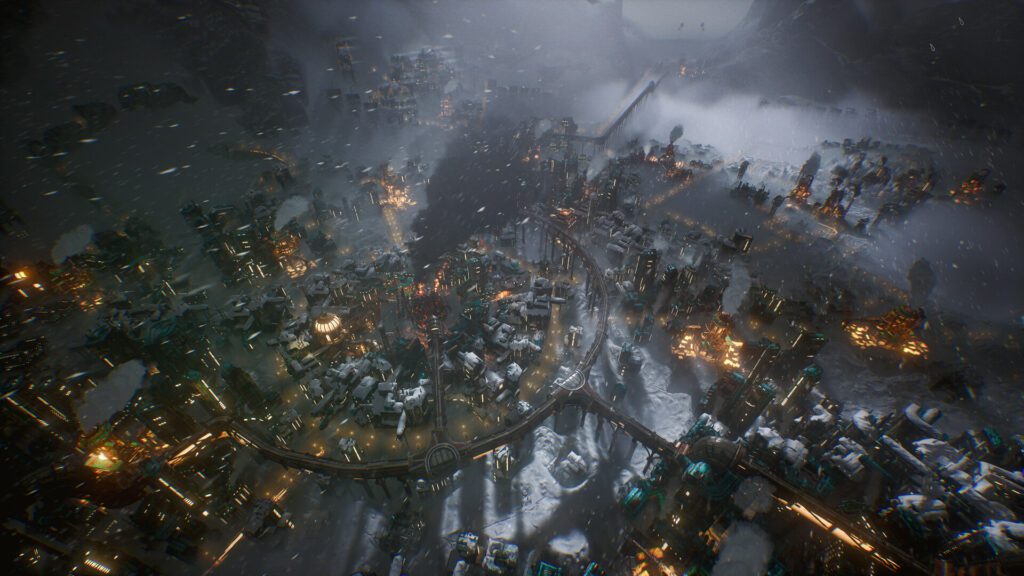
Moral Compromises
As with the original game, Frostpunk 2 puts you in situations where no choice feels truly right. The sliding scale of morality is slippery, and the game delights in pushing you toward darker decisions. It’s easier to rule with an iron fist—to enact harsher laws, deploy robot patrols, or stifle dissent with propaganda. But as in life, taking the easy road comes with consequences, both in terms of gameplay and in the weight of your own conscience.
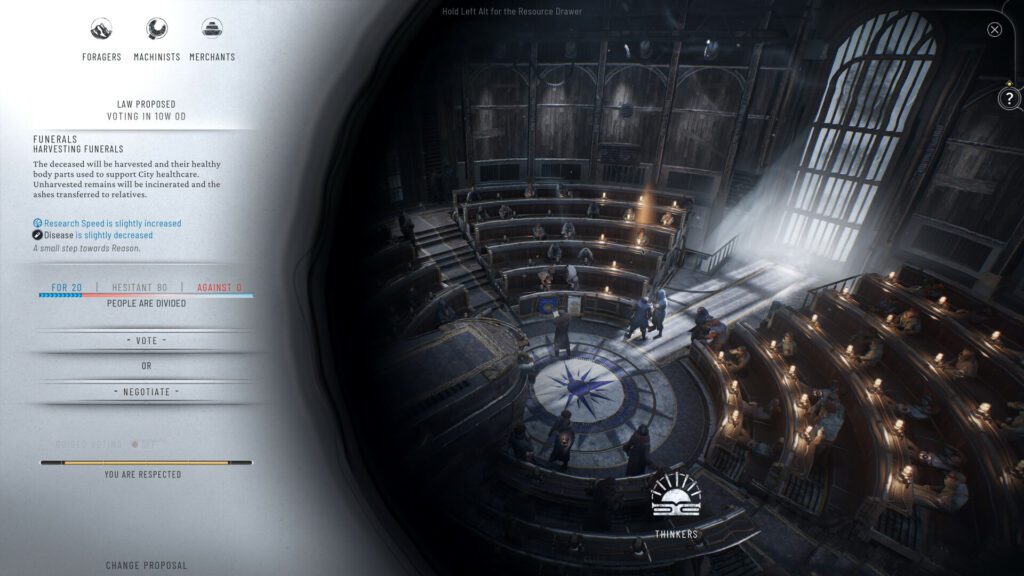
This escalation of moral compromise is where Frostpunk 2 shines the brightest. The game constantly reminds you that every action you take ripples outward, influencing your city’s future in ways you might not expect. It’s a masterclass in how small, seemingly insignificant decisions can spiral into catastrophic consequences—or unforeseen triumphs.
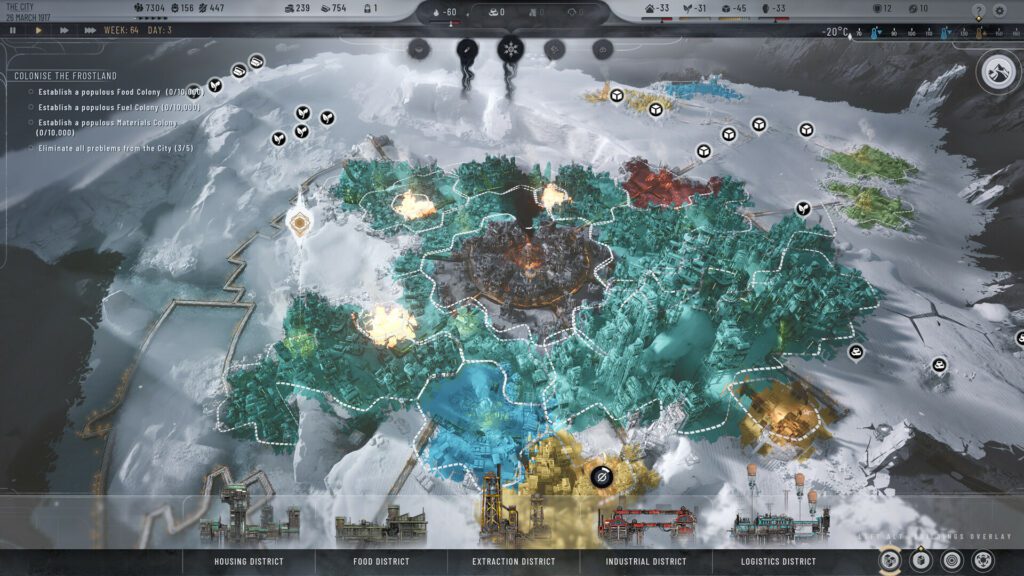
A Chilly Conclusion
Frostpunk 2 is a compelling sequel that both respects and expands upon the foundation of the first game. While its increased scale sometimes distances you from the hands-on city-building that made the original so intimate, it more than compensates with its deeply layered political systems and agonizing moral choices. The cold may still be the enemy, but the true danger now lies within the tangled, ever-shifting alliances of your people.
Prepare yourself, not just for a brutal survival experience, but for a high-stakes social experiment where every decision feels like a step toward your inevitable fall—or your unlikely triumph.
I just want to share my impressions of a video game so people can see if they want it or not.
Mainly I play video games and go on the Internet.
Why are you trying to read this far?

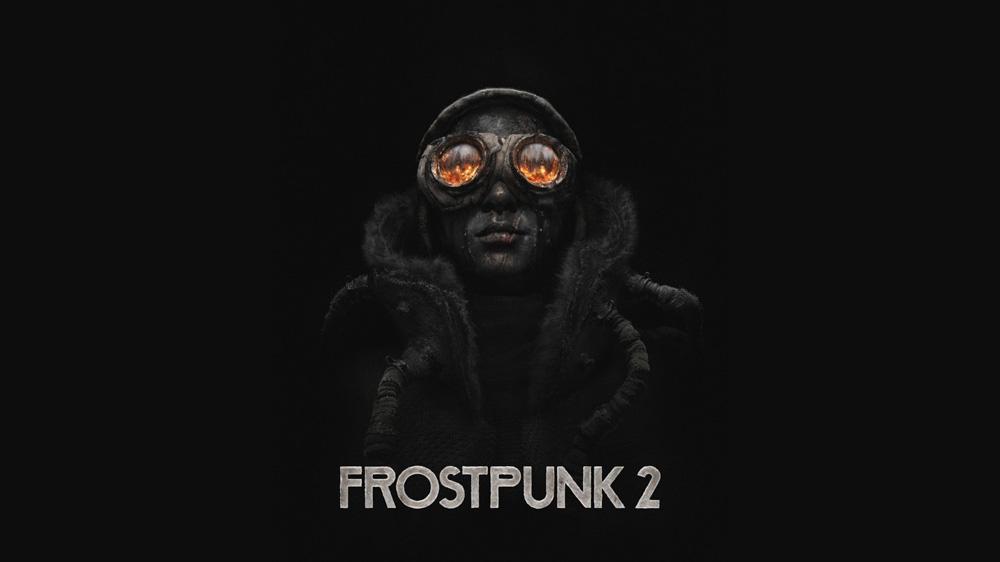
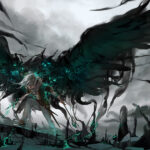
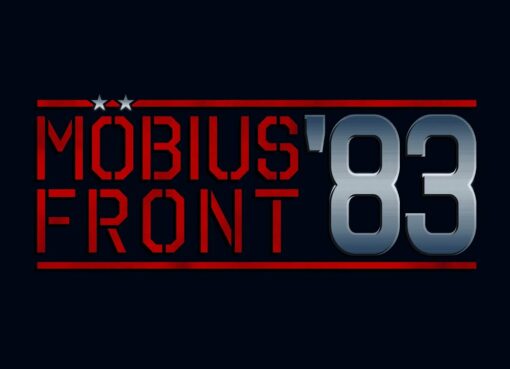
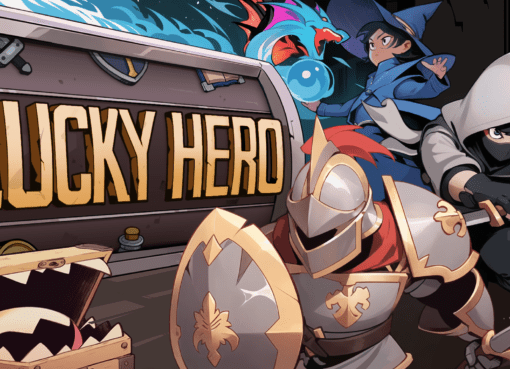
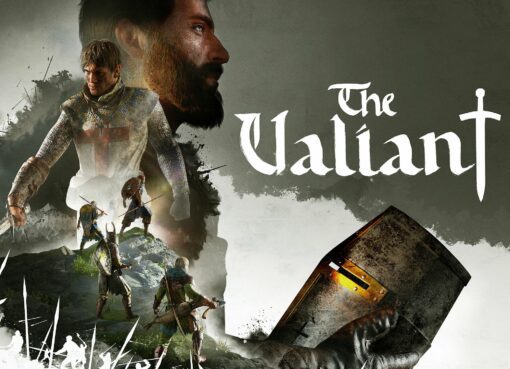
Comment here